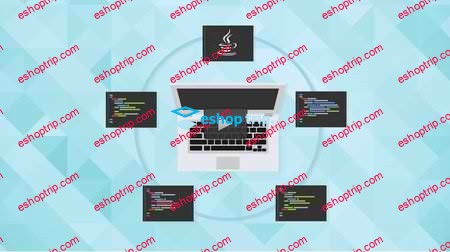Published 7/2024
Created by Luís Cunha, PhD
MP4 | Video: h264, 1280×720 | Audio: AAC, 44.1 KHz, 2 Ch
Genre: eLearning | Language: English | Duration: 181 Lectures ( 4h 44m ) | Size: 2.18 GB
CNNs, LSTMs, GANs, VAEs, Transformers (including GPTs) and Stable Diffusion
What you’ll learn:
Learn the basic principles of artificial neural networks and how they are trained.
Implement and train Convolutional Neural Networks (CNNs) for image classification and object detection using Python.
Design and apply Long Short-Term Memory (LSTM) networks to predict and analyze time series data.
Construct, fine-tune, and deploy Transformer models, such as GPT-type models, for various natural language processing tasks.
Create and train Generative Adversarial Networks (GANs) to generate realistic synthetic images and data.
Build and utilize Variational Auto-Encoders (VAEs) for data compression and generation tasks.
Apply style transfer and stable diffusion methods to creatively alter and enhance images.
Requirements:
Basic understanding of programming concepts is recommended, but not required. Familiarity with Python will be helpful for coding exercises. Access to a computer with internet connection for using demos and playgrounds.
Description:
Welcome to the “Deep Learning and Generative Artificial Intelligence” course! This comprehensive course is designed for anyone interested in diving into the exciting world of deep learning and generative AI, whether you’re a beginner with no programming experience or an experienced developer looking to expand your skill set.What You Will Learn:Foundations of Deep Learning and Artificial Neural Networks: Gain a solid understanding of the basic concepts and architectures that form the backbone of modern AI.Convolutional Neural Networks (CNNs): Learn how to implement and train CNNs for image classification and object detection tasks using Python and popular deep learning libraries.Long Short-Term Memory (LSTM) Networks: Explore the application of LSTM networks to predict and analyze time series data, enhancing your ability to handle sequential data.Transformer Models: Dive into the world of Transformer models, including GPT-type models, and learn how to construct, fine-tune, and deploy these models for various natural language processing tasks.Generative Adversarial Networks (GANs): Understand the principles behind GANs and learn how to create and train them to generate realistic synthetic images and data.Variational Auto-Encoders (VAEs): Discover how to build and utilize VAEs for data compression and generation, understanding their applications and advantages.Style Transfer and Stable Diffusion: Experiment with style transfer techniques and stable diffusion methods to creatively alter and enhance images.Course Features:Interactive Coding Exercises: Engage with hands-on coding exercises designed to reinforce learning and build practical skills.User-Friendly Demos and Playgrounds: For those who prefer a more visual and interactive approach, our course includes demos and playgrounds to experiment with AI models without needing to write code.Real-World Examples: Each module includes real-world examples and case studies to illustrate how these techniques are applied in various industries.Project-Based Learning: Apply what you’ve learned by working on projects that mimic real-world scenarios, allowing you to build a portfolio of AI projects.Who Should Take This Course?Aspiring AI Enthusiasts: Individuals with no prior programming experience who want to understand and leverage AI through intuitive interfaces.Developers and Data Scientists: Professionals looking to deepen their understanding of deep learning and generative AI techniques.Students and Researchers: Learners who want to explore the cutting-edge advancements in AI and apply them to their studies or research projects.
Who this course is for:
This course is designed for anyone interested in deep learning and generative AI, including beginners with no programming experience who want to use AI through user-friendly interfaces, as well as programmers looking to deepen their understanding and skills in this field.
Homepage










